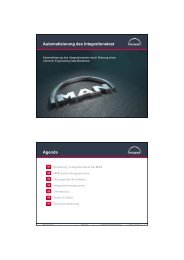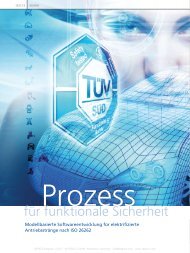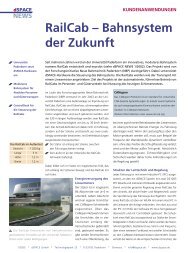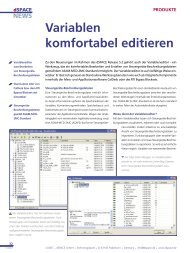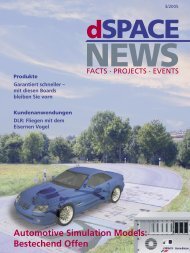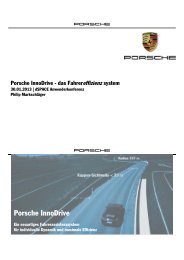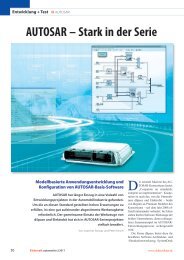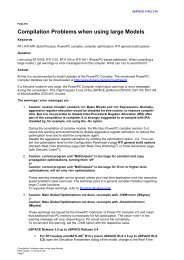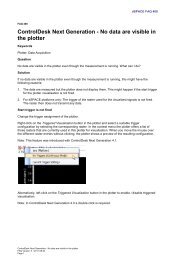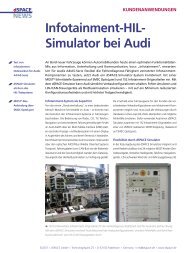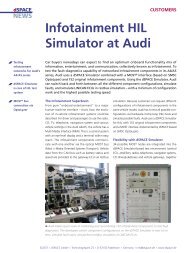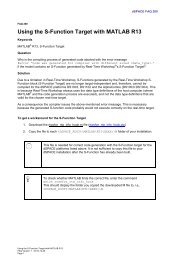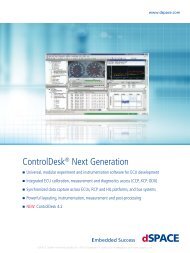magazinE - dSPACE
magazinE - dSPACE
magazinE - dSPACE
You also want an ePaper? Increase the reach of your titles
YUMPU automatically turns print PDFs into web optimized ePapers that Google loves.
pAGe 32 DARpA URBAN CHALLeNGe<br />
This system has the following<br />
advantages:<br />
n Meets tough realtime<br />
requirements, even with a<br />
nonrealtimecapable PC.<br />
n Safety functions can be<br />
implemented directly on the<br />
reliable AutoBox<br />
(emergency stop).<br />
n Trajectory planning and<br />
trajectory control are not<br />
coupled.<br />
While there can be no doubt that<br />
the challenge has given an<br />
enormous boost to the development<br />
of selfdriving vehicles, it is<br />
actually only a sideshow.<br />
TR28’s real goals are a lot higher<br />
(http://www.kognimobil.org/),<br />
even though achieving them is a<br />
long way off. In the future, the<br />
vehicles will have to cope without<br />
receiving prior information on their<br />
environment. A detailed map of<br />
the road network like that used by<br />
the<br />
vehicles in the Urban Challenge<br />
might no longer be necessary. A<br />
vehicle approaching an intersection<br />
would recognize it as such<br />
with the aid of its sensors. Data<br />
interchange between vehicles is<br />
also conceivable.<br />
Team Oshkosh Truck, Wisconsin, USA<br />
“ We were mainly 3 groups working<br />
together – Oshkosh Truck,<br />
Wisconsin (headquarters of the<br />
Oshkosh company); Teledyne,<br />
California; and Parma University in<br />
Italy with the Artificial Vision and<br />
Intelligent Systems Laboratory<br />
(VisLab). We organized weekly<br />
teleconferences and many trips to<br />
the US to develop and test the<br />
system. The teamwork was very<br />
successful and well coordinated.<br />
We had several critical, very exciting<br />
situations. For example, we<br />
were still testing the system the<br />
night before the race. We – just<br />
like everyone else, I believe – had<br />
a very tight schedule that did not<br />
allow us to include everything we<br />
designed and realized. For example,<br />
we unfortunately did not use<br />
the whole potential of vision (we<br />
developed 4 systems and only<br />
used 2 of them!) due to lack of<br />
testing time. Oshkosh is indeed<br />
interested in having these<br />
technologies in its vehicles. For<br />
Oshkosh and VisLab the Urban<br />
Challenge was not just a race and<br />
nothing more.<br />
We see a wide range of possibilities<br />
to implement these technologies on<br />
real vehicles as a retrofit. And we<br />
already did so: We demonstrated a<br />
palletized load system (PLS) vehicle<br />
able to reach a destination, unload,<br />
and get back autonomously. We did<br />
that just after the Grand Challenge,<br />
in January 2006.”



